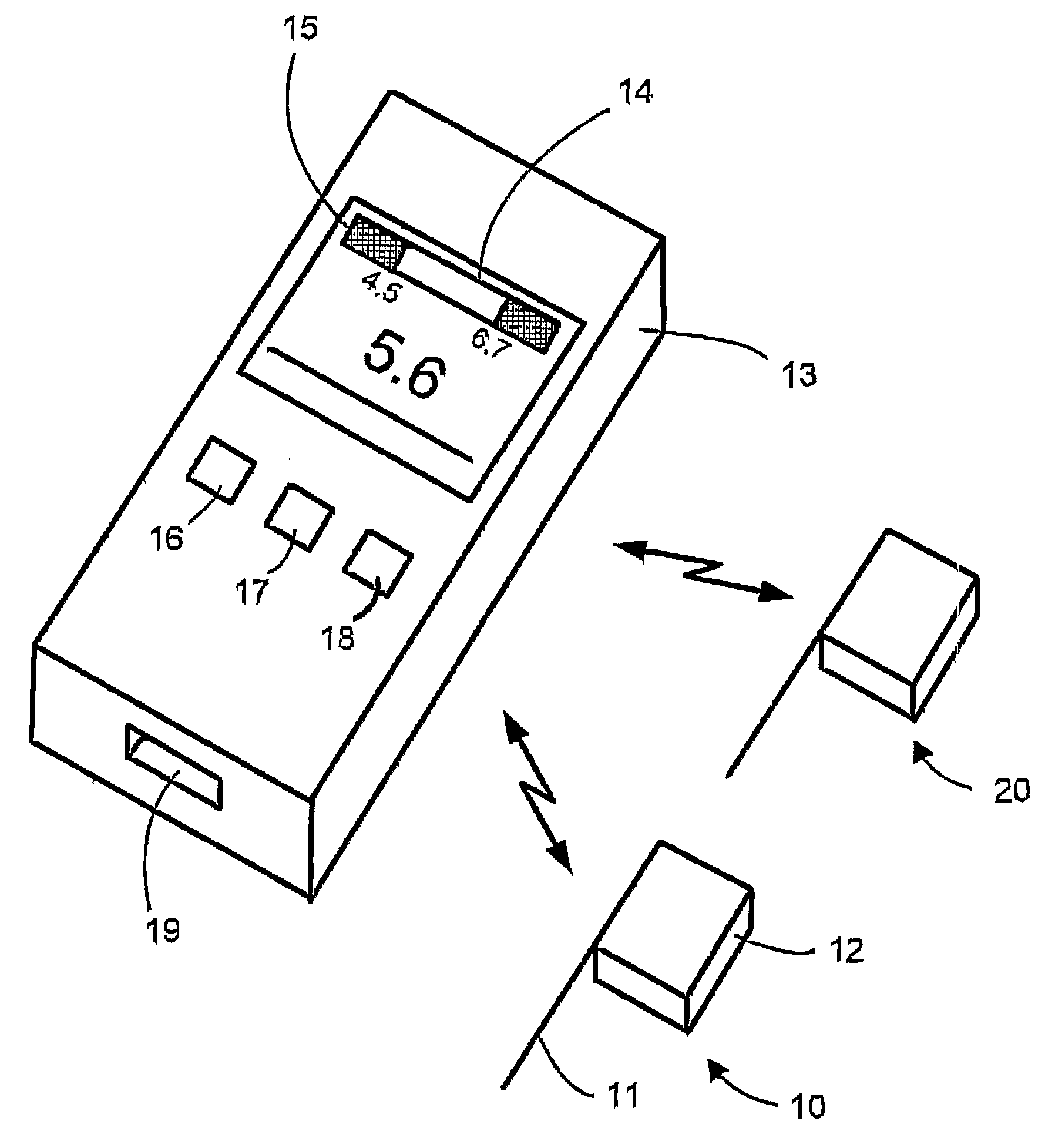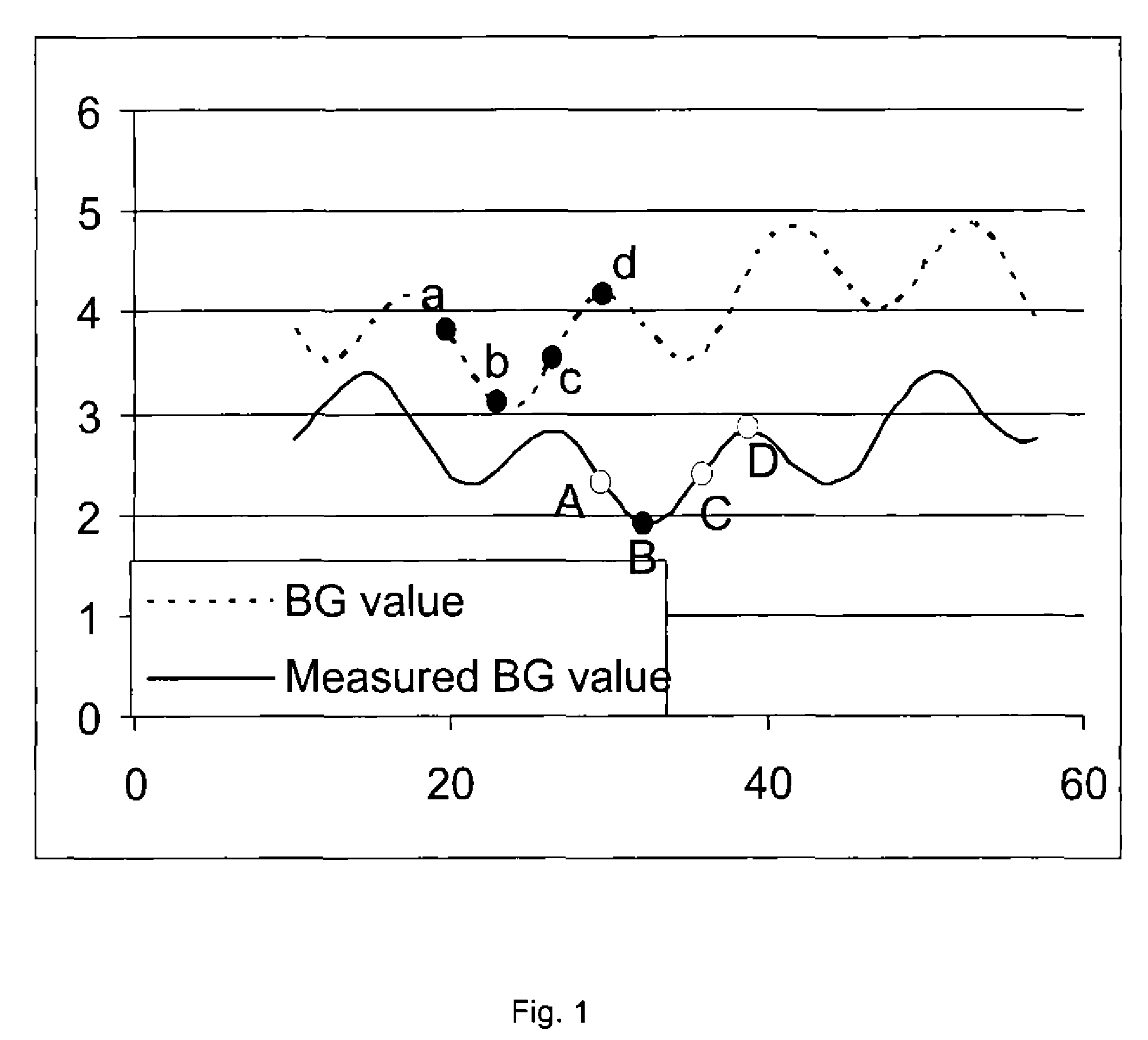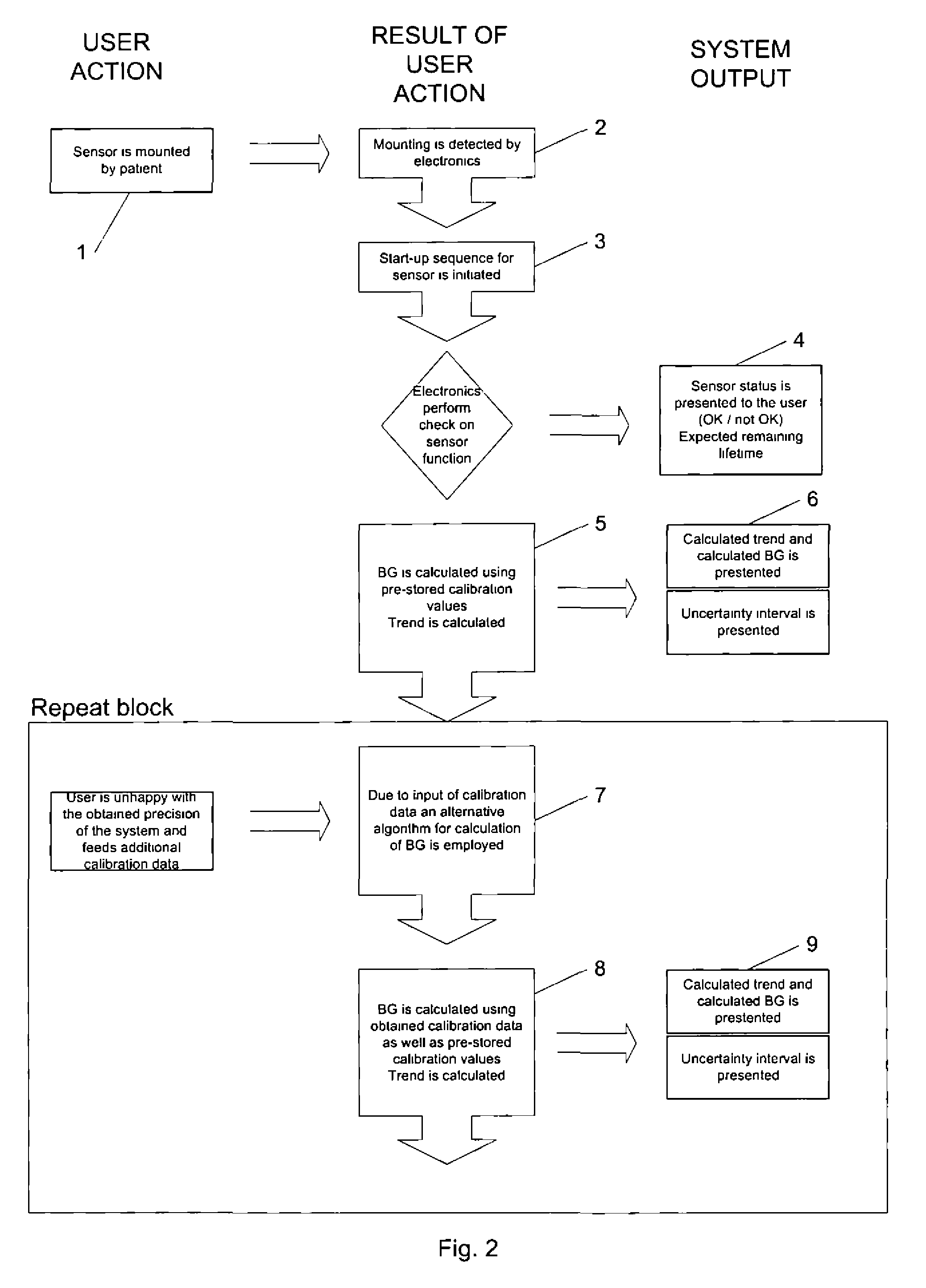System and Method for Estimating the Glucose Concentration in Blood
a technology of glucose concentration and system, applied in the field of procedures for estimating the glucose concentration in blood, can solve the problems of not being able to obtain exact readings, not being able to fully understand the bg at any time, and the relationship between the reading and the actual value becoming even more complex, so as to increase the flexibility and convenience of the system, and not reducing the safety and reliability of the system
- Summary
- Abstract
- Description
- Claims
- Application Information
AI Technical Summary
Benefits of technology
Problems solved by technology
Method used
Image
Examples
Embodiment Construction
[0035]The principle of the invention will first be described with reference to FIG. 1 with the object of showing how, in practice, it is possible to calculate the uncertainty intervals presented to the user.
[0036]Especially for the algorithms calculating the calibration constants numerous approaches are valid, thus the example below is only depicting one possibility among many.
[0037]In the general case calibration values are weighted such that new values count more than older ones. This is not included in this example in order to keep the mathematical expressions simple.
[0038]Also the validity of older calibration measurements degrade with time. This is conveniently accomplished by letting ΔM grow with time. This is not included in this example in order to keep the mathematical expressions simple.
[0039]Definitions:
[0040]BG value=Real BG value, i.e. the value one would obtain from a perfect CGM system f(t)=The variation of BG value with time.
[0041]f(t) is not known. Only discrete poi...
PUM
 Login to View More
Login to View More Abstract
Description
Claims
Application Information
 Login to View More
Login to View More - R&D
- Intellectual Property
- Life Sciences
- Materials
- Tech Scout
- Unparalleled Data Quality
- Higher Quality Content
- 60% Fewer Hallucinations
Browse by: Latest US Patents, China's latest patents, Technical Efficacy Thesaurus, Application Domain, Technology Topic, Popular Technical Reports.
© 2025 PatSnap. All rights reserved.Legal|Privacy policy|Modern Slavery Act Transparency Statement|Sitemap|About US| Contact US: help@patsnap.com



